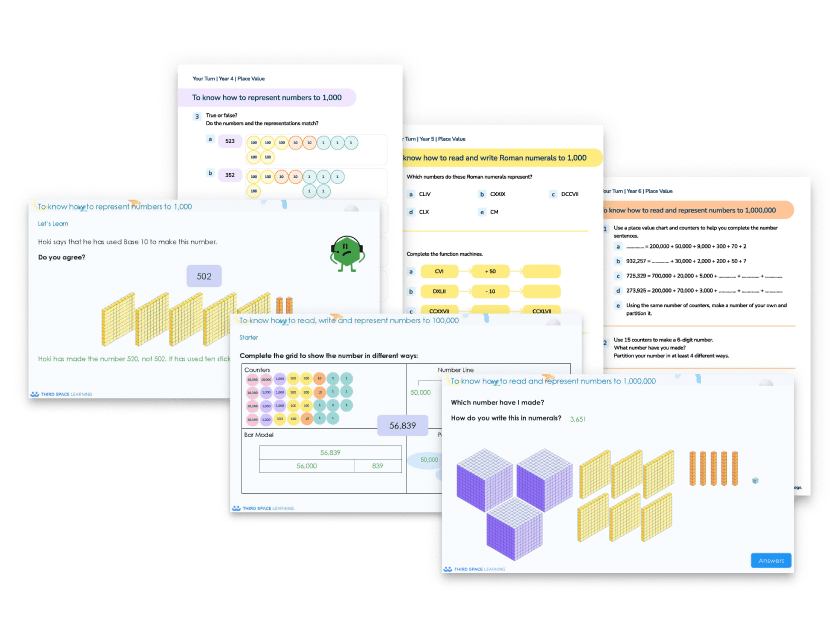White Rose Maths Year 4: What Students Learn And The Resources To Support Them
Here we look at the White Rose Maths Year 4 scheme of learning, the topics it covers across the year and provide lots of sample questions and maths resources for those following White Rose in Year 4.
About White Rose Maths
The White Rose Maths Education scheme of learning follows the national curriculum with a mastery approach to maths with a range of fluency, reasoning and problem solving elements. They also encourage concrete, pictorial and abstract representations to develop deep understanding of mathematical concepts.
Read more: White Rose Maths
It is thought that approximately 70% of schools in the UK follow the White Rose Maths scheme. Because of this, our team of maths teachers and pedagogy experts use White Rose maths to inform the development of our tutoring programmes and to train Skye, the AI maths tutor. This enables our tutoring to deliver one to one, personalised lessons that feel familiar to students who are used to White Rose and that can have close transferability from tutoring to the classroom.
Throughout this article you’ll see example lesson slides and example questions from Third Space Learning’s Year 4 maths curriculum that exemplify best practice teaching to the White Rose Maths Year 4 scheme.
Year 4 White Rose Place Value Lesson
Download these free Year 4 White Rose resources to teach your class place value. You will need to register or login to the Maths Hub but it’s totally free!
Download Free Now!About the Year 4 White Rose maths resources provided
In this article we’ve included lots of links to Year 4 White Rose Maths resources that are suitable for use for each topic. All of these links will take you to the Third Space Learning Maths Hub. Many of the resources are free to download once you’ve registered (also free); others are accessible with a premium subscription.
You’ll also be able to review our entire range of maths resources for Year 4 while you’re there, most of which are aligned to White Rose Maths. Keep reading to find out more about these resources and the Year 4 White Rose Maths scheme.
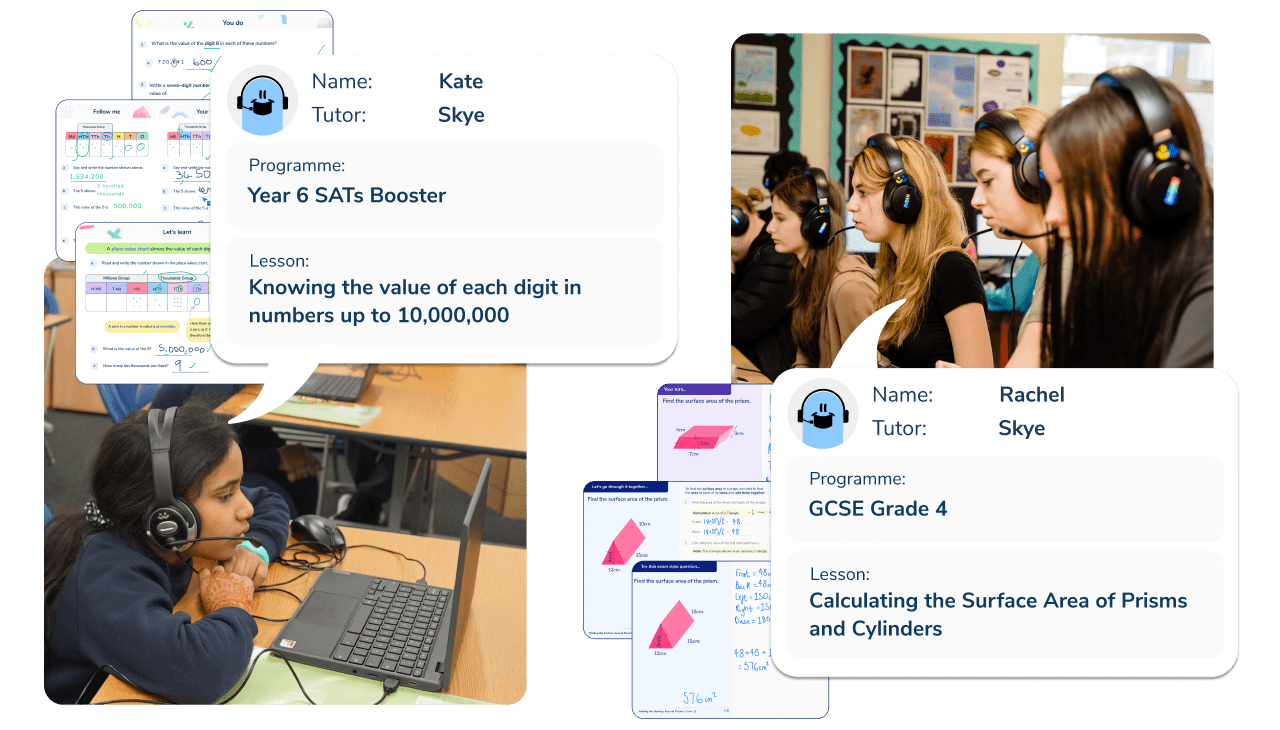
Meet Skye, the voice-based AI tutor making maths success possible for every student.
Built by teachers and maths experts, Skye uses the same pedagogy, curriculum and lesson structure as our traditional tutoring.
But, with more flexibility and a lower cost, schools can scale online maths tutoring to support every student who needs it.
Watch Skye in actionAbout the White Rose Maths Year 4 Scheme of Learning
The primary school White Rose Maths scheme of learning has gone through several iterations and versions up to the current version 3. The scheme of learning SOL is designed as guidance and it is not necessarily intended for each small step to take one lesson. As with all teaching, it is important that teachers adapt this SOL for their class/ pupils.
Topics covered in Year 4 White Rose Maths scheme of learning work
The White Rose Maths Year 4 SOL outlines which topics are taught, and when, throughout the autumn, spring and summer terms of Year 4.
The breakdown for Version 3 of the scheme of learning is as follows
Year 4 autumn term
- Place value
- Addition and subtraction
- Area
- Multiplication and division (A)
Year 4 spring term
- Multiplication and division (B)
- Length and perimeter
- Fractions
- Decimals (A)
Year 4 summer term
- Decimals (B)
- Money
- Time
- Shape
- Statistics
- Position and direction
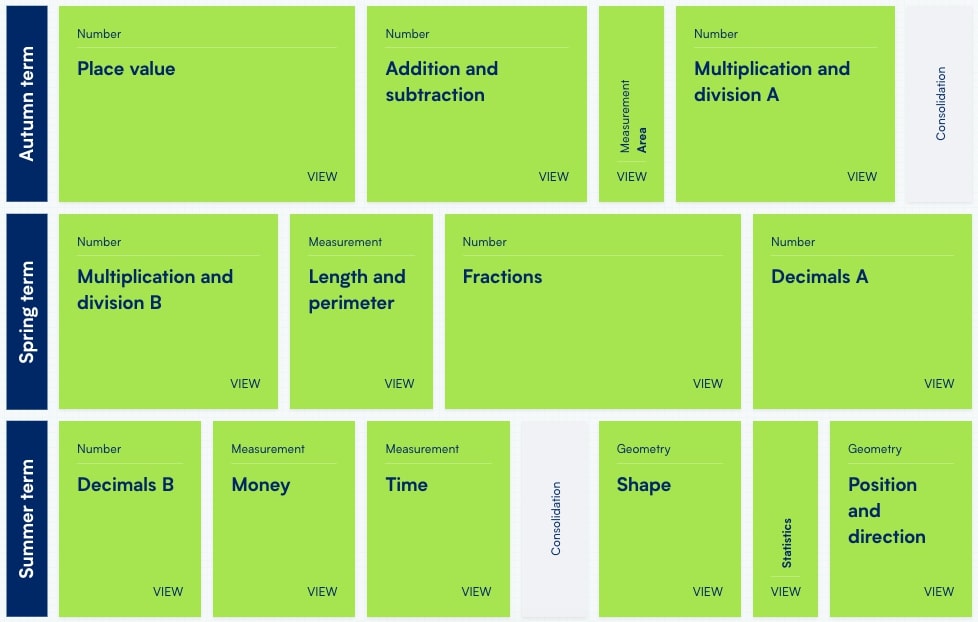
Recommended White Rose Maths Year 4 resources
Third Space Learning has created several collections of White Rose Maths aligned resources for all primary year groups from Year 1 through to Year 6. These resources can provide a different perspective on a topic and so help pupils spend the time needed to fully embed a concept.
Here is a summary of the different collections available for schools following Year 4 White Rose Maths, many of them free to download from our maths hub. Links to the topic specific versions are provided within each termly breakdown below:
Ready to go lesson slides
These ready-to-go lesson slides come in the form of editable PowerPoints with related worksheets that are designed for everyday teaching. The slides cover both version 2 of the White Rose scheme of learning (in blue) and version 3 of the SOL. They also include support slides that can be used to support pupils who need a little extra pre/ post teaching to support their understanding.
Code Crackers
Our Code Crackers resources are aligned to the version 3 SOL. These are summative resources designed as a retrieval activity for the end of the place value block.
Pre and Post Diagnostic Assessments
These assessments can be used before starting a block of learning to assess gaps, and after teaching a block of learning to identify progress.
Worked Examples
Pupils check over completed questions to identify errors (or identify correct answers). Pupils are encouraged to explain the errors they find, not just ‘mark’ work. These worked examples help to solidify understanding by getting the pupil to discuss errors and how to avoid them.
Rapid Reasoning
These reasoning problems go alongside our Fluent in Five resource. Each day focuses on a specific small step with 3 questions that progress in difficulty.
Word Problems
Test your class’ problem solving skills with these word problems worksheets.
Extension Questions
These topic based questions can be used to help pupils deepen their understanding by challenging them to think differently about a given topic.
White Rose Maths Year 4 autumn term
At the start of term in the autumn block 1, Year 4 focuses on place value, addition & subtraction, area and multiplication & division.
Place Value Year 4
Place value is a principal focus of mathematics teaching in Year 4, covering a four week period at the start of the autumn term. The topic progresses on from White Rose Maths Year 3, with a number of new concepts introduced to pupils for the first time. Pupils compare numbers beyond 1000; find 1000 more and less; count backwards through zero and round numbers to the nearest 10, 100 and 1000. At this stage, pupils also practise using Roman Numerals.
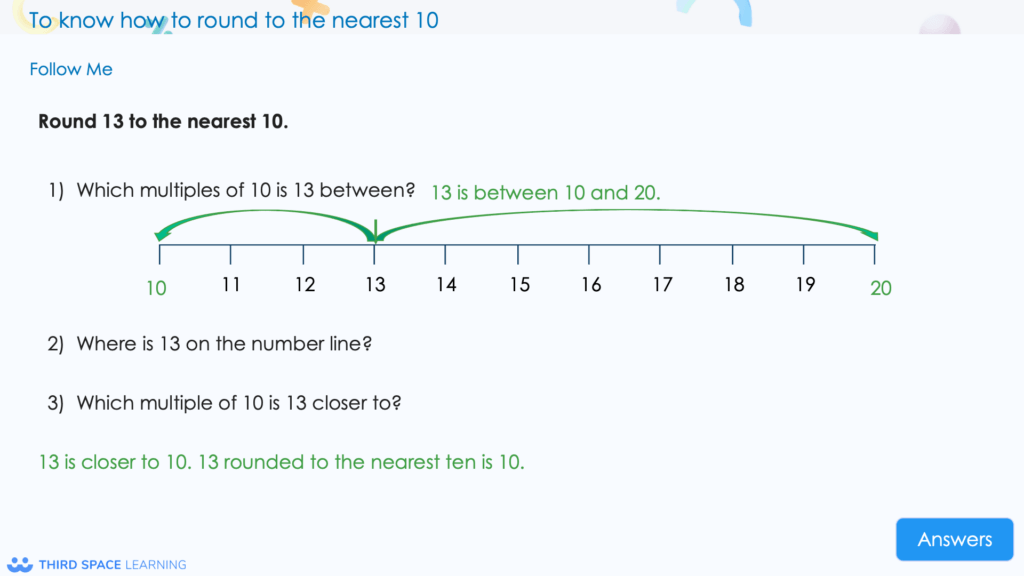
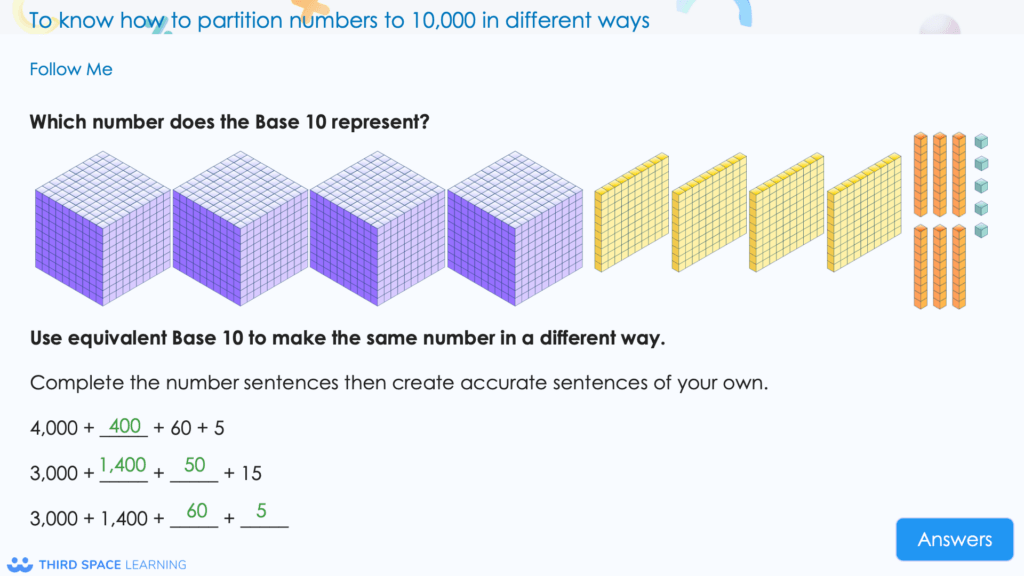
a number as well as representing a number using concrete resources.
Example Year 4 place value questions
1. What is the value of the underlined digit? 4769
Answer: 6 tens or 60
2. Can you partition the number 7,358?
Answer: 7,000 + 300 + 50 + 8
3. What number is represented by the place value counters:
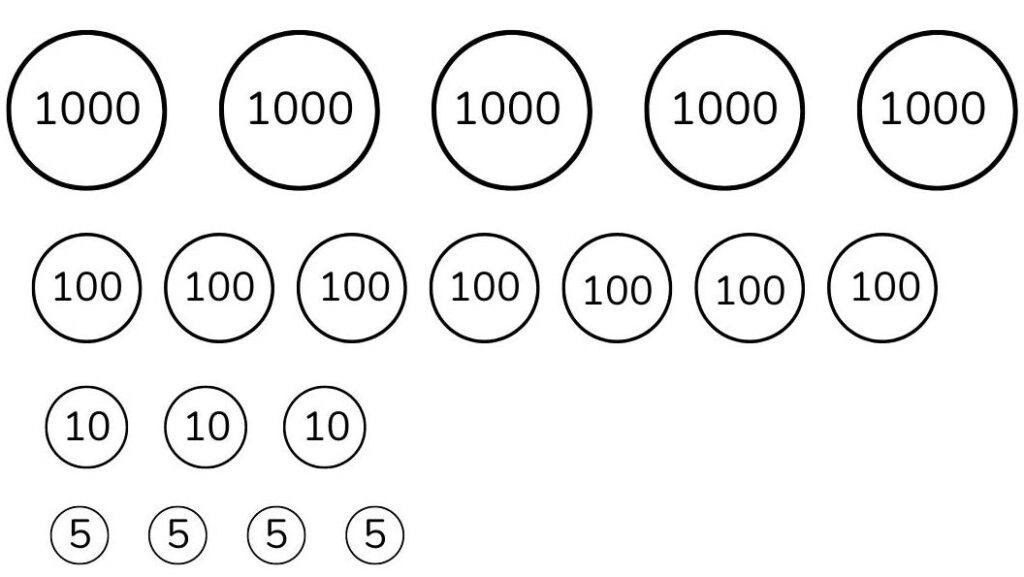
Answer: 5,734
White Rose Maths Year 4 place value resources (FREE)
- Ready-to-go Lessons Place Value Year 4
- Maths Code Crackers Place Value Year 4
- Diagnostic Assessments Place Value Year 4
- Worked Examples Place Value Year 4
- Rapid Reasoning Weeks 1 to 6 Year 4
- Word Problems Place Value Year 4
- Extension Questions Place Value Year 4
- Knowledge Organiser Place Value Year 4
Addition and Subtraction Year 4
In Year 4 during autumn block 2, children progress from adding and subtracting numbers with up to 3-digits, using a formal method, to numbers with up to 4-digits. Children continue to work with concrete resources, starting with no exchanging or regrouping, then progressing to one exchange or regroup, followed by more than one exchange or regroup. They build on the problem solving skills developed in Year 3, moving from solving one-step problems, to more complex two-step problems.
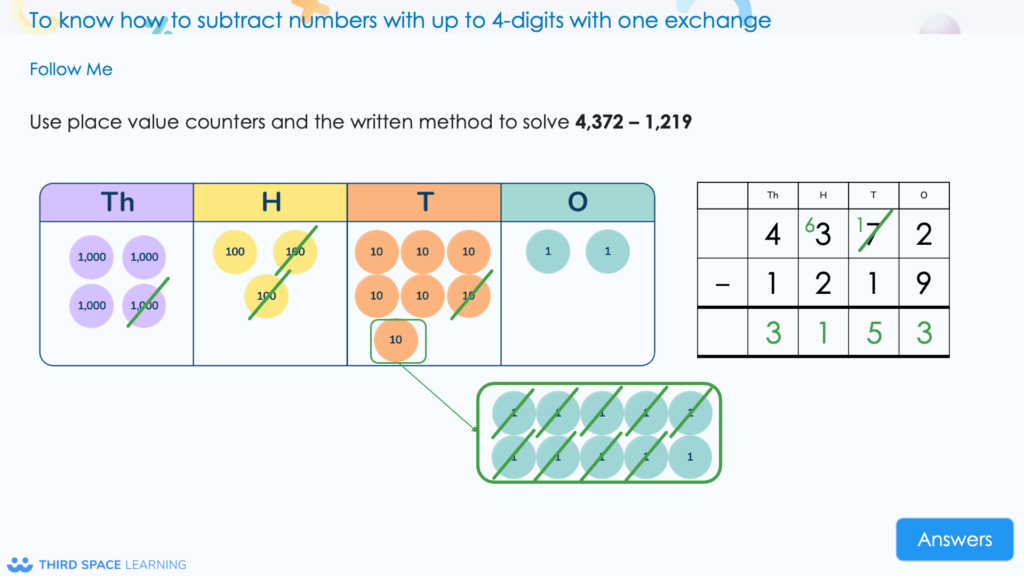
resources as well as a formal written method.
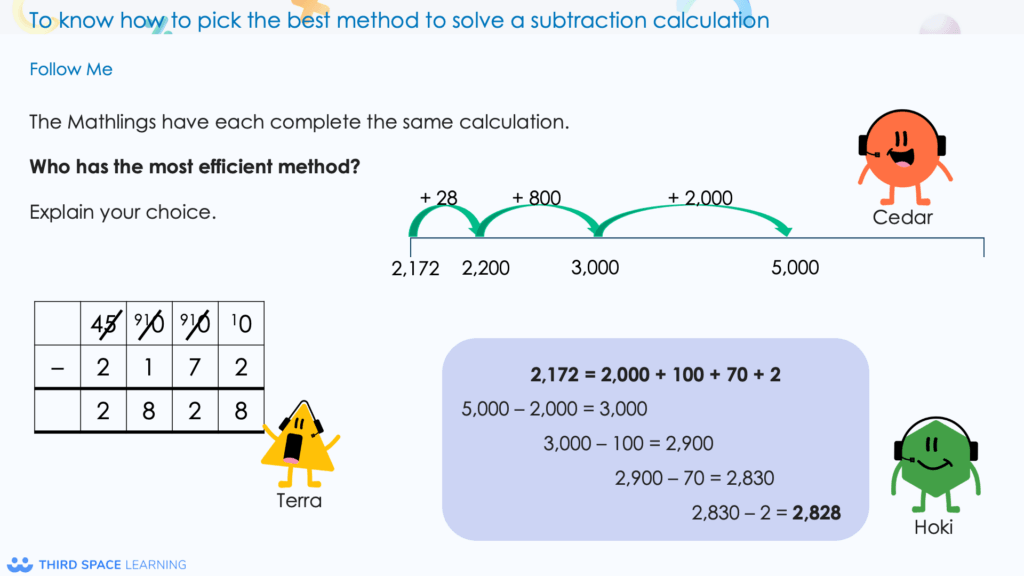
and the written method is not always the most efficient method.
Example Year 4 addition and subtraction questions
1. 6395 + 3867 =
Answer: 10,262
2. 9342 – 4867 =
Answer: 4,475
3. A pilot flew 3756km to his first destination. He then flew a further 2576km to reach his second destination. How far did he fly altogether?
Answer: 6,332km
White Rose Maths Year 4 addition and subtraction resources (FREE)
White Rose Maths Year 4 addition and subtraction resources (PREMIUM)
- Ready-to-go Lessons Addition and Subtraction Year 4
- Diagnostic Assessments Addition and Subtraction Year 4
- Worked Examples Addition and Subtraction Year 4
- Word Problems Addition and Subtraction Year 4
- Extension Questions Addition and Subtraction Year 4
- Knowledge Organiser Addition and Subtraction Year 4
Area Year 4
In version 3 of the White Rose scheme of learning, the area topic has been taken from the spring term and has replaced length and perimeter in autumn block 3. This is a new concept in Year 4, having been exposed to only perimeter in Year 3. At this stage, they find the area of rectilinear shapes by counting squares.
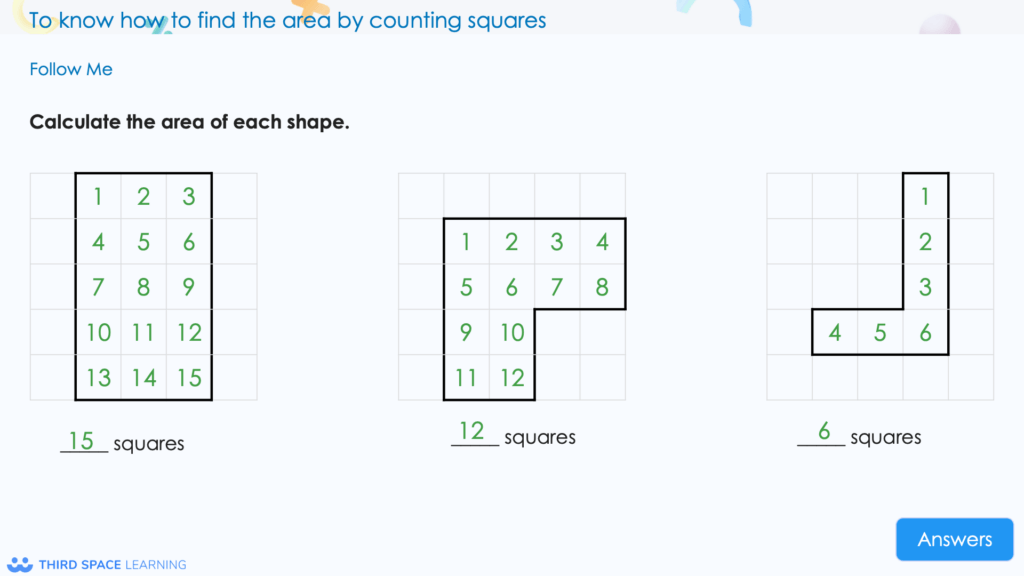
they explore this via counting squares.
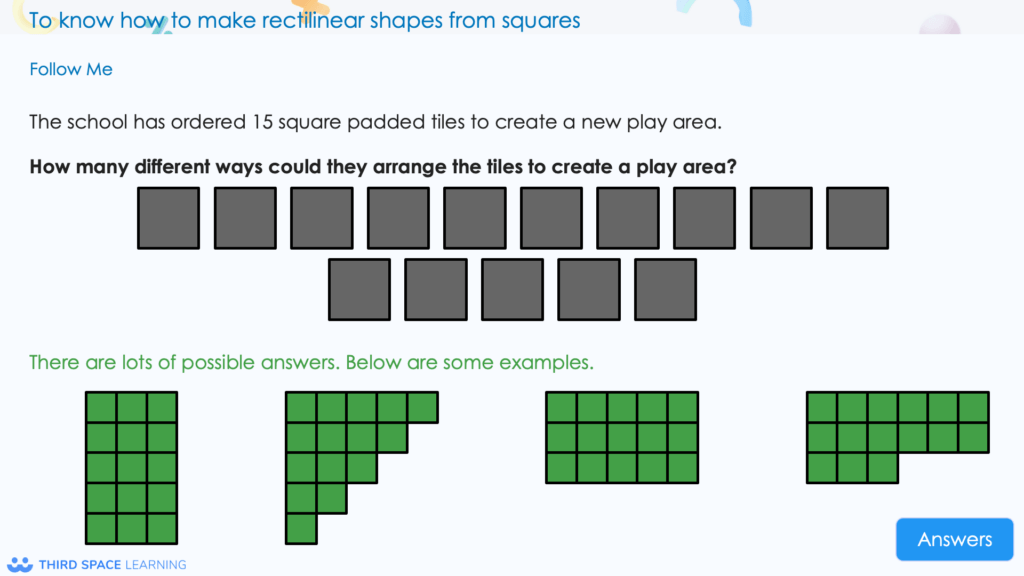
Example Year 4 area questions
1. Calculate the area of this shape (each square is 1cm)
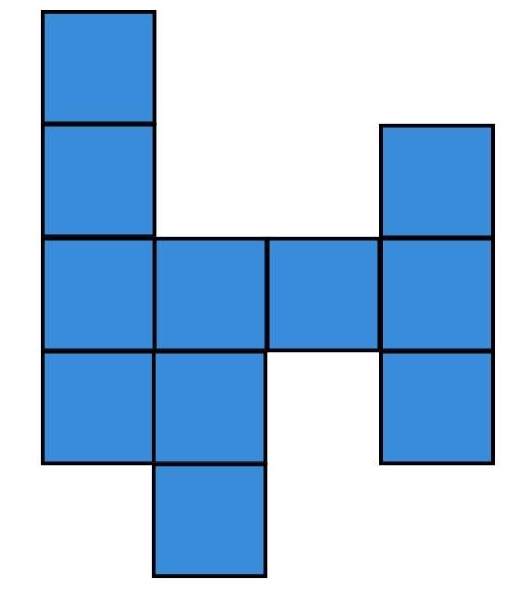
Answer: 11cm^{2}
2. Draw your own shape with an area of 11 squares
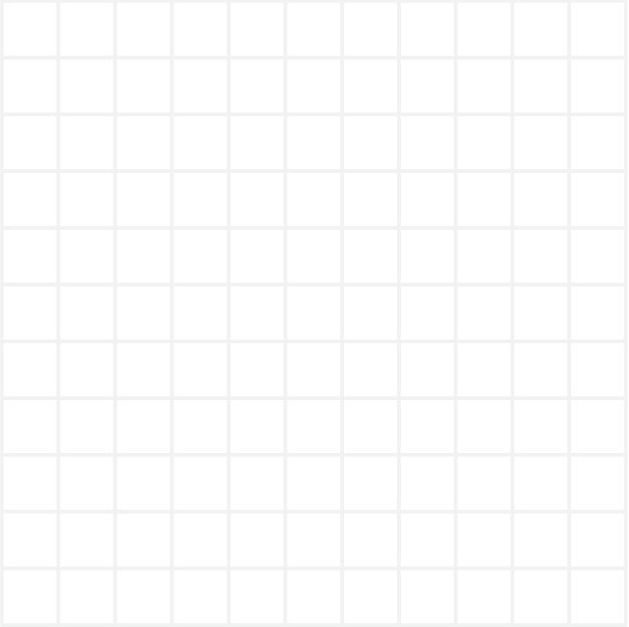
White Rose Maths Year 4 area resources (PREMIUM)
- Ready-to-go Lessons Area Year 4
- Diagnostic Assessments Area Year 4
- Maths Code Crackers Area Year 4
- Worked Examples Area Year 4
- Extension Questions Area Year 4
Multiplication and Division Year 4
Multiplication and division has been split into two blocks, with block A in autumn block 4, at the end of the autumn term and block B in the spring.
Multiplication and Division A Year 4
The first block of multiplication and division focuses on times tables knowledge; looking at multiplying and dividing. Initial focus is on the 3, 6 and 9 times tables, followed by the 7, 11 and 12 times tables. Pupils also explore multiplying and dividing by 1 and 0 and multiplying three numbers together.
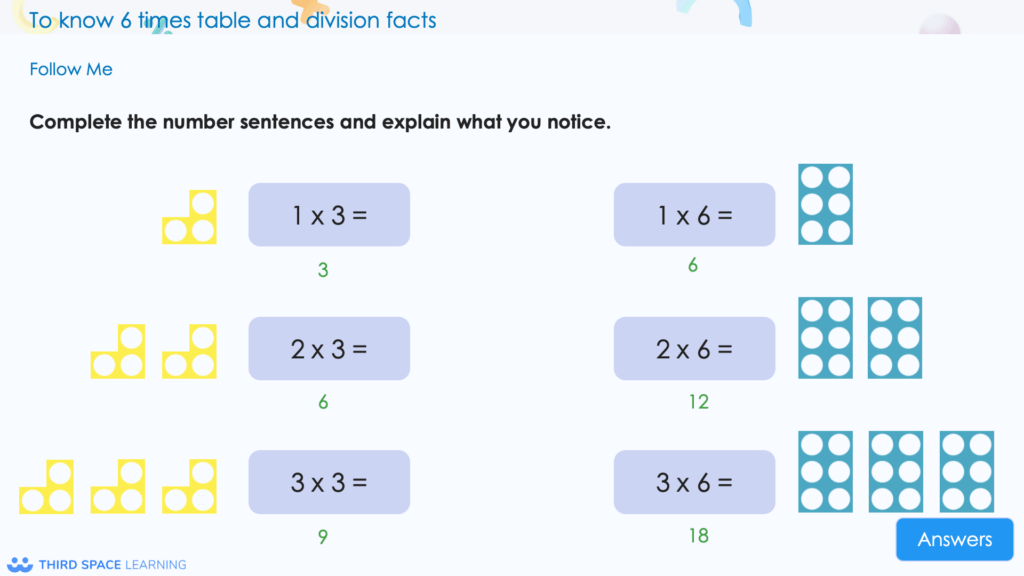
It is important to make connections between different times tables as they are learning.
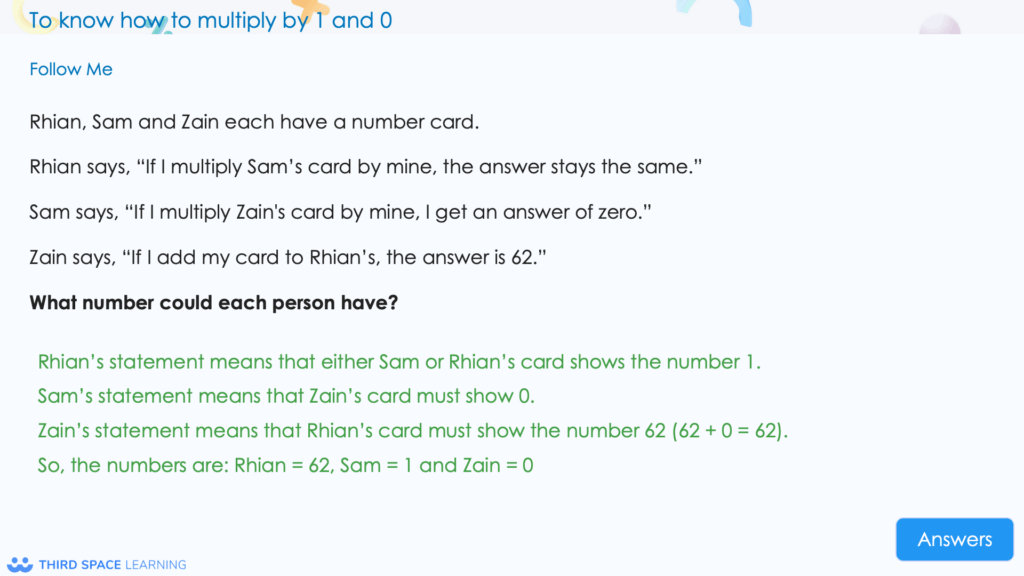
also learn about multiplying by 1 and 0.
Example Year 4 multiplication and division A questions
1 . 7 × 9
Answer: 63
2. Sam bought 7 boxes of eggs. How many eggs did he have in total?
Answer: 7 × 6 = 42
White Rose Maths Year 4 multiplication and division resources (PREMIUM)
- Ready-to-go Lessons Multiplication and Division A Year 4
- Ready-to-go Lessons Multiplication and Division B Year 4
- Diagnostic Assessments Multiplication and Division A Year 4
- Diagnostic Assessments Multiplication and Division B Year 4
- Maths Code Crackers Multiplication and Division A Year 4
- Maths Code Crackers Multiplication and Division B Year 4
- Worked Examples Multiplication and Division A Year 4
- Worked Examples Multiplication and Division B Year 4
- Word Problems Multiplication Year 4
- Word Problems Division Year 4
- Extension Questions Multiplication and Division Year 4
- Knowledge Organiser Multiplication and Division Year 4
White Rose Maths Year 4 spring term
In the spring term, Year 4 focuses on multiplication & division, length & perimeter, fractions and decimals.
Multiplication and Division B Year 4
This is the second block, following on from the initial multiplication and division block in the Autumn term. In this block, pupils utilise the skills developed in Block A. Initially they investigate factor pairs and multiplying & dividing by 10 and 100, they then move on to using formal written methods to multiply 2 and 3-digit numbers by 1 digit and explore ways of partitioning 2 and 3-digits as a progression towards formal written method for division.
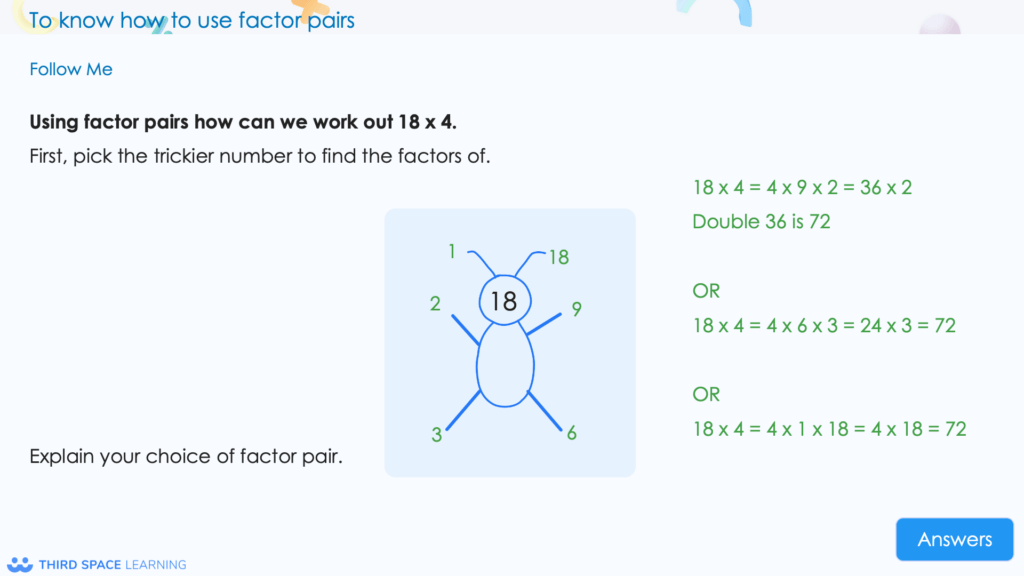
use factors to help solve other calculations.
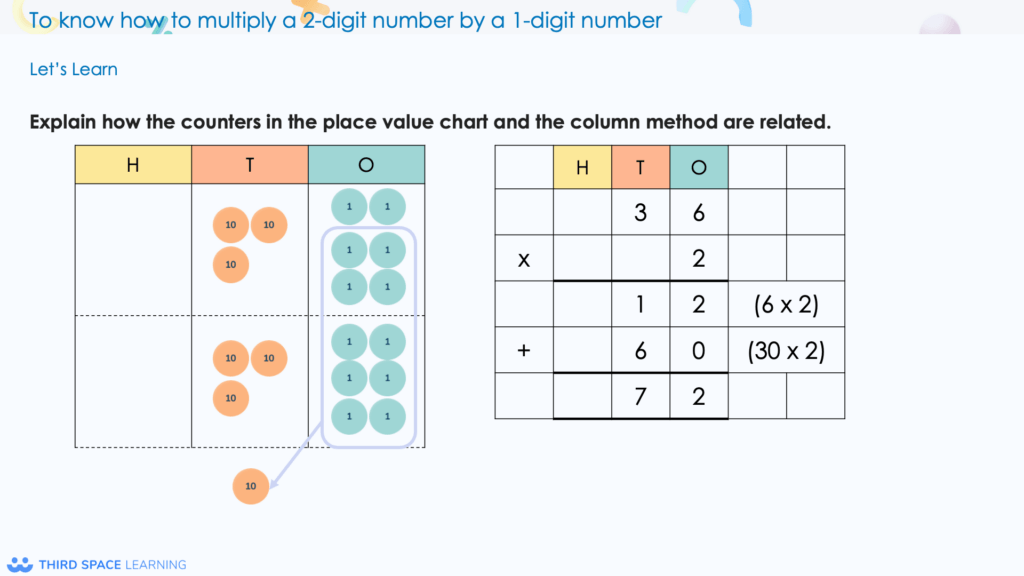
resources to solidify their understanding of the method.
Example Year 4 multiplication and division B questions
1. Calculate 365 × 4
Answer: 1,460
2. 4 children participated in a sponsored swim. Each child swam 125 lengths of the pool. How many lengths did the 4 children swim in total?
Answer: 125 × 4 = 500 lengths
Length and Perimeter Year 4
In Year 4, pupils build on the knowledge they gained in Year 3, progressing from finding the perimeter of rectangles, to finding the perimeter of rectilinear shapes and regular polygons. Pupils are also introduced to calculating missing lengths and to converting between units of measurement (metres and kilometres).
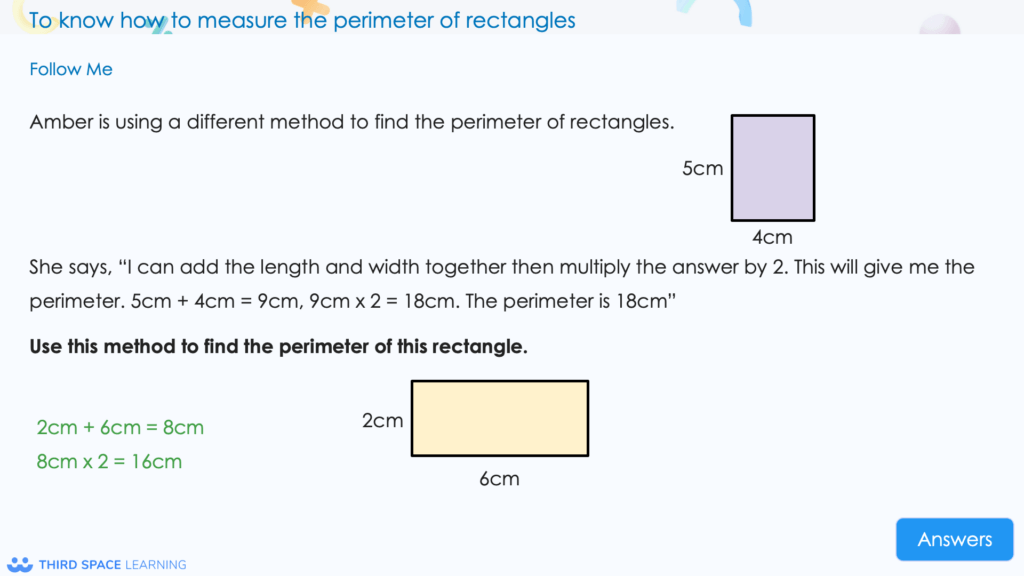
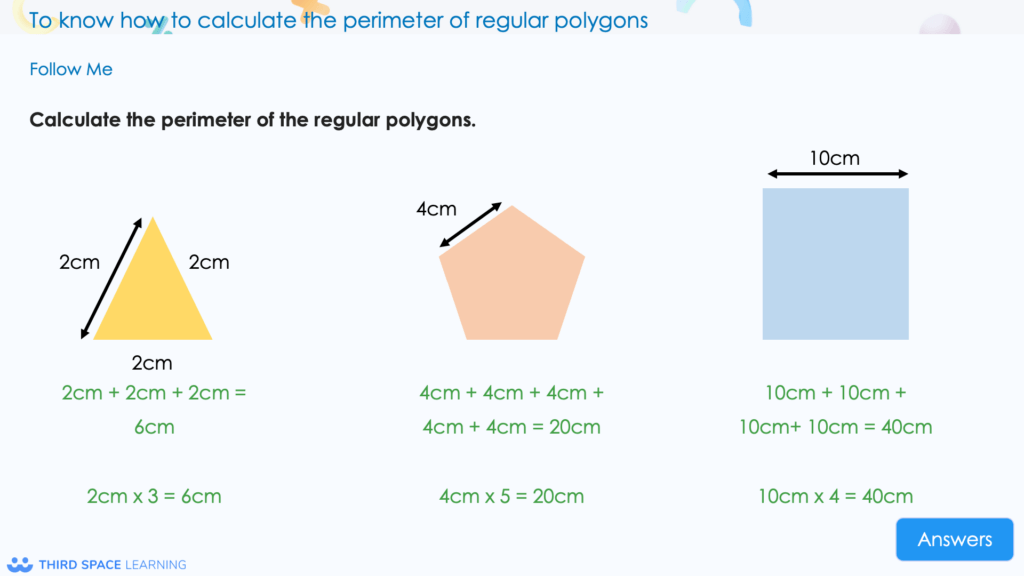
Example Year 4 length and perimeter questions
1. What is the perimeter of a rectangle with a length of 7cm and a width of 4cm?
Answer: 22cm
2. A park had fencing around the play equipment. The play area was 12m long and 8m wide. How many metres of fencing was used around the garden?
Answer: 40m
White Rose Maths Year 4 length and perimeter resources (PREMIUM)
- Ready-to-go Lessons Length and Perimeter Year 4
- Diagnostic Assessments Length and Perimeter Year 4
- Maths Code Crackers Length and Perimeter Year 4
- Worked Examples Length and Perimeter Year 4
- Extension Questions Length and Perimeter Year 4
Fractions Year 4
Fractions is one of the largest blocks pupils cover in Year 4, spanning 4 weeks of the spring term. At this stage pupils are introduced to mixed numbers and improper fractions, and build on their understanding of equivalent fractions and adding / subtracting fractions with the same denominator. Students also begin solving problems involving increasingly harder fractions to calculate quantities, and fractions to divide quantities.
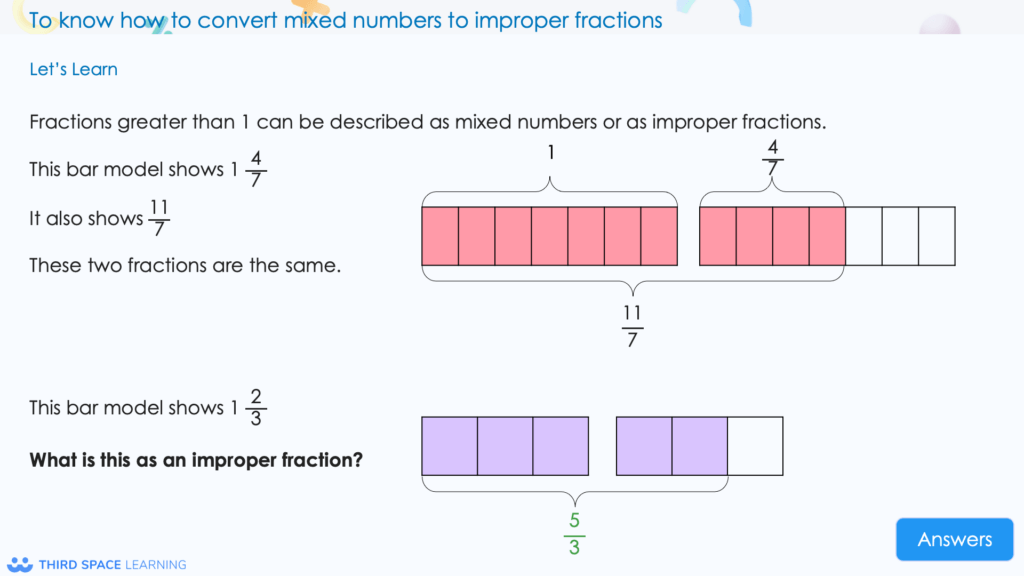
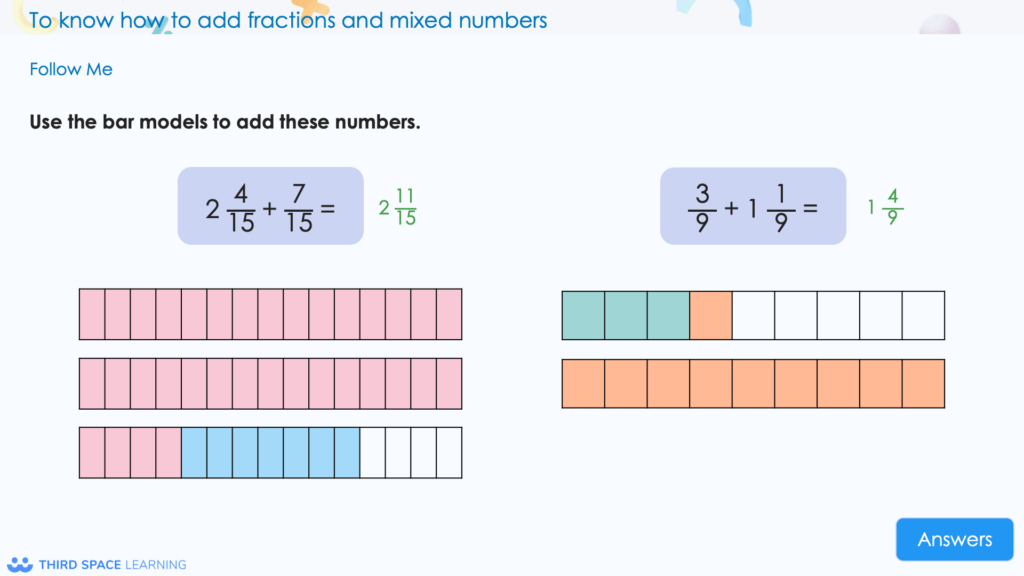
adding fractions, including mixed numbers, with the same denominator.
Example Year 4 fractions questions
1. Shade in \frac{1}{3} of this rectangle:
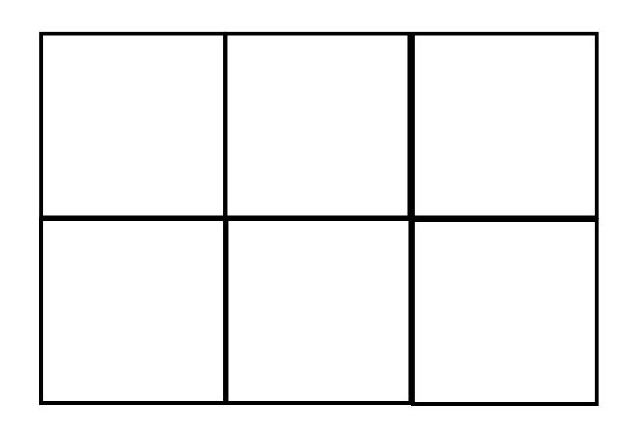
Answer: 2 out of the 6 squares should be shaded in
2. \frac{3}{12} +\frac{5}{12}=
Answer: \frac{8}{12}
3. Mason and Ahmed baked 24 cookies. Mason ate \frac{1}{6} of the cookies and Ahmed ate \frac{1}{8}. How much did they each eat?
Answer: Ahmed ate 4 cookies and Ahmed 3 cookies
White Rose Maths Year 4 fractions resources (FREE)
- Maths Worksheets Adding 2 or More Fractions Year 4
- Maths Worksheets Subtracting Fractions Year 4
- Maths Worksheets Fractions of Quantity Year 4
White Rose Maths Year 4 fractions resources (PREMIUM)
- Ready-to-go Lessons Fractions Year 4
- Diagnostic Assessments Fractions Year 4
- Maths Code Crackers Fractions Year 4
- Worked Examples Fractions Year 4
- Extension Questions Fractions Year 4
Decimals Year 4
The topic on decimals in Year 4 has been split into two blocks, with block A at the end of the spring term and block B in the summer.
Decimals A Year 4
In the first decimals block, students build on their knowledge of fractions from Year 3, investigating tenths and hundredths as fractions and decimals, through the use of place value charts and number lines. Pupils are also introduced to the concept of dividing 1- and 2- digit numbers by 10 and 100.
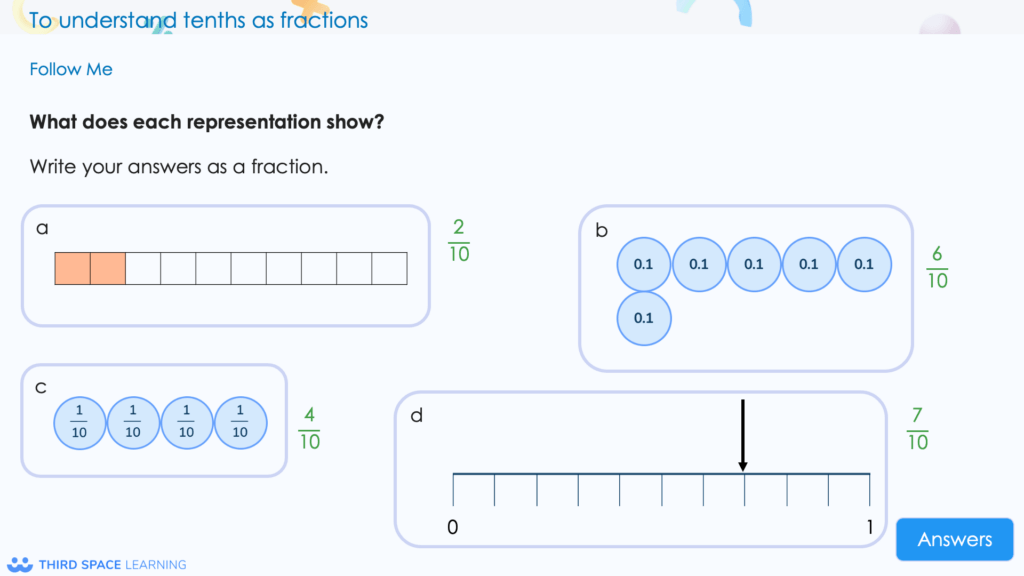
from their place value block of work. This decimals block of work builds on this
to develop an understanding of tenths as decimals.
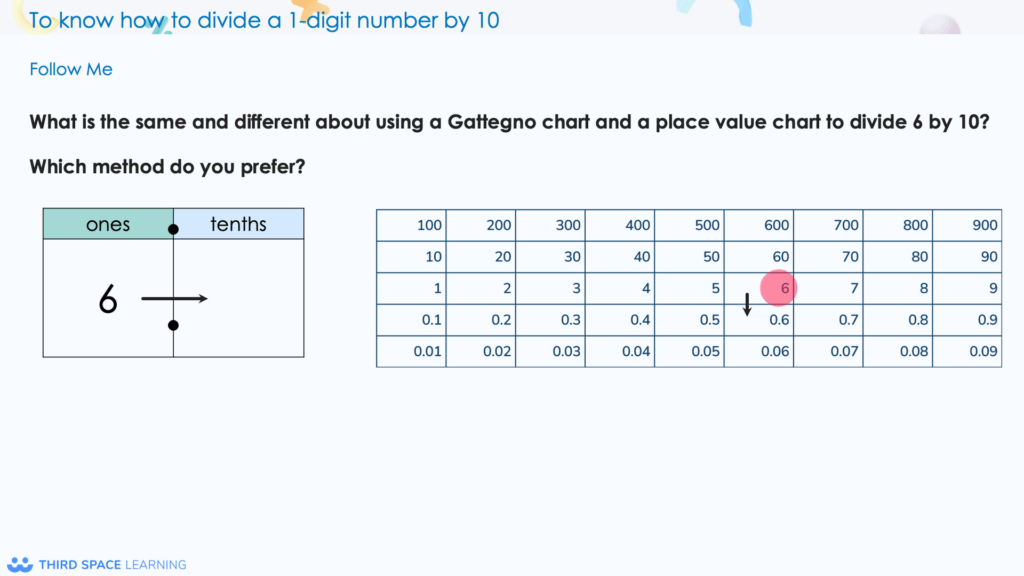
Example Year 4 decimals A questions
1. Write \frac{7}{10} as a decimal
Answer: 0.7
2. 42 ÷ 10 =
Answer: 4.2
3. What number is being shown on the place value chart?
Show a place value chart with 5 tens, 2 ones and 6 tenths
Answer: 5.26
White Rose Maths Year 4 decimals resources (FREE)
- Maths Worksheets Writing Tenths as Decimals Year 4
- Maths Worksheets Writing Hundredths as Decimals Year 4
- Maths Worksheets Making A Whole With Tenths Year 4
- Maths Worksheets Making A Whole With Hundredths Year 4
- Maths Worksheets Comparing Decimals Year 4
- Maths Worksheets Ordering Decimals Year 4
- Maths Worksheets Rounding Decimals To The Nearest Whole Year 4
- Maths Worksheets Dividing 1 or 2-Digits by 10 Year 4
- Maths Worksheets Dividing 1 or 2-Digits by 100 Year 4
White Rose Maths Year 4 decimals resources (PREMIUM)
- Ready-to-go Lessons Decimals A Year 4
- Ready-to-go Lessons Decimals B Year 4
- Diagnostic Assessments Decimals Year 4
- Maths Code Crackers Decimals A Year 4
- Maths Code Crackers Decimals B Year 4
- Worked Examples Decimals A Year 4
- Worked Examples Decimals B Year 4
- Extension Questions Decimals Year 4
White Rose Maths Year 4 summer term
In the summer term, Year 4 focuses on decimals, money, time, shape, statistics and position & direction.
Decimals B Year 4
In this second decimals unit, pupils explore making a whole with tenths and with hundredths. Students are also introduced to comparing and ordering decimals; rounding to the nearest whole number and recognising halves and quarters as decimals.
Example Year 4 decimals B questions
1. Order the following decimal numbers from smallest to biggest
32.47 32.4 32.8 32.73
Answer: 32.4 32.47 32.73 32.8
2. Round 5.58 to the nearest whole number.
Answer: 6
3. Match the decimals and fractions below:
| \frac{1}{2} | 0.25 |
| \frac{3}{4} | 0.1 |
| \frac{1}{10} | 0.75 |
| \frac{1}{4} | 0.5 |
Answer:
| \frac{1}{2} | 0.5 |
| \frac{3}{4} | 0.75 |
| \frac{1}{10} | 0.1 |
| \frac{1}{4} | 0.25 |
Money Year 4
Money is a short topic in Year 4. Pupils begin by writing money using decimals, followed by converting between pounds and pence. Students also compare and estimate amounts of money and solve problems, calculating with money.
Example Year 4 money questions
1. During a school fair, 5 of the stalls decided to work out how much money they had made. Put their totals in ascending order.
8950p £87.23 5938p 5970p £58.25
Answer: £58.25 5938p 5970p £87.23 8950p
2. Chloe bought 5 cupcakes costing 45p each. If she paid with a £5 note, how much change would she get? Give your answer in pounds and pence.
Answer: £2.75
White Rose Maths Year 4 money resources (FREE)
- Maths Worksheets Making Amounts of Money Year 4
- Maths Worksheets Calculating With Money Year 4
- Maths Worksheets Comparing Money Year 4
- Maths Worksheets Estimating Money Year 4
White Rose Maths Year 4 money resources (PREMIUM)
- Ready-to-go Lessons Money Year 4
- Diagnostic Assessments Money Year 4
- Maths Code Crackers Money Year 4
- Worked Examples Money Year 4
- Extension Questions Money Year 4
Time Year 4
By Year 4, pupils should have a solid understanding of time and should be able to read, write and convert time between analogue and digital 12- and 24-hour clocks. Students need to also be able to solve problems involving converting hours to minutes, minutes to seconds, years to months and weeks to days.
Example Year 4 time questions
1. Match the following 12 hour clock times to the correct 24 hour clock times:
| 3:00pm | 10:15 |
| 7:45am | 15:00 |
| 11:30pm | 13:00 |
| 10:15am | 07:45 |
| 1:00pm | 23:30 |
Answer
| 3:00pm | 15:00 |
| 7:45am | 07:45 |
| 11:30pm | 23:30 |
| 10:15am | 10:15 |
| 1:00pm | 13:00 |
2. Ahmed and Hamza went to watch a film at the cinema. The film start at 2:35pm and finished at 4:15pm. How long was the film?
Answer: 1 hour and 40 minutes
White Rose Maths Year 4 time resources (PREMIUM)
- Ready-to-go Lessons Time Year 4
- Diagnostic Assessments Time Year 4
- Maths Code Crackers Time Year 4
- Worked Examples Time Year 4
- Extension Questions Time Year 4
Shape Year 4
Pupils continue to classify shapes using geometrical properties; exploring the different triangles and quadrilaterals. Knowledge of angles progresses to identifying acute and obtuse angles, and comparing and ordering angles by size. Students are introduced to symmetry in Year 4; identifying lines of symmetry presented in different orientations.
Example Year 4 shape questions
1. Sort the following angles into acute, obtuse and right angles.

Answers:
- Acute: a & c
- Right angle: b
- Obtuse angle: d
2. Label the following triangles as: equilateral, isosceles or scalene:
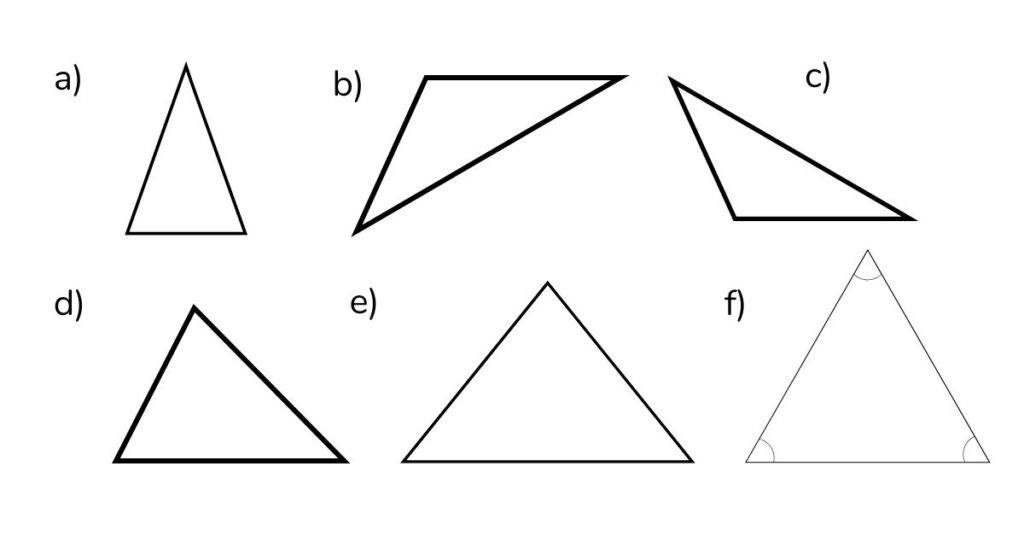
Answers:
- a) Isosceles
- b) Scalene
- c) Scalene
- d) Scalene
- e) Isosceles
- f) Equilateral
White Rose Maths Year 4 shape resources (FREE)
- Maths Worksheets Classifying Quadrilaterals Year 4
- Maths Worksheets Classifying Triangles Year 4
- Maths Worksheets Identifying Angles Year 4
- Maths Worksheets Comparing and Ordering Angles Year 4
- Maths Worksheets Lines of Symmetry Year 4
- Maths Worksheets Completing a Symmetric Figure Year 4
White Rose Maths Year 4 shape resources (PREMIUM)
- Ready-to-go Lessons Shape Year 4
- Diagnostic Assessments Shape Year 4
- Maths Code Crackers Shape Year 4
- Worked Examples Shape Year 4
- Extension Questions Shape Year 4
Statistics Year 4
Statistics is one of the shortest topics of the Year 4 curriculum. Pupils are taught to understand and use simple scales and interpret charts; including bar charts, pictograms and line graphs.
Example Year 4 statistics questions
1. Sophie carried out a survey on the favourite colour of children in her year group. She represented her results on a pictogram.
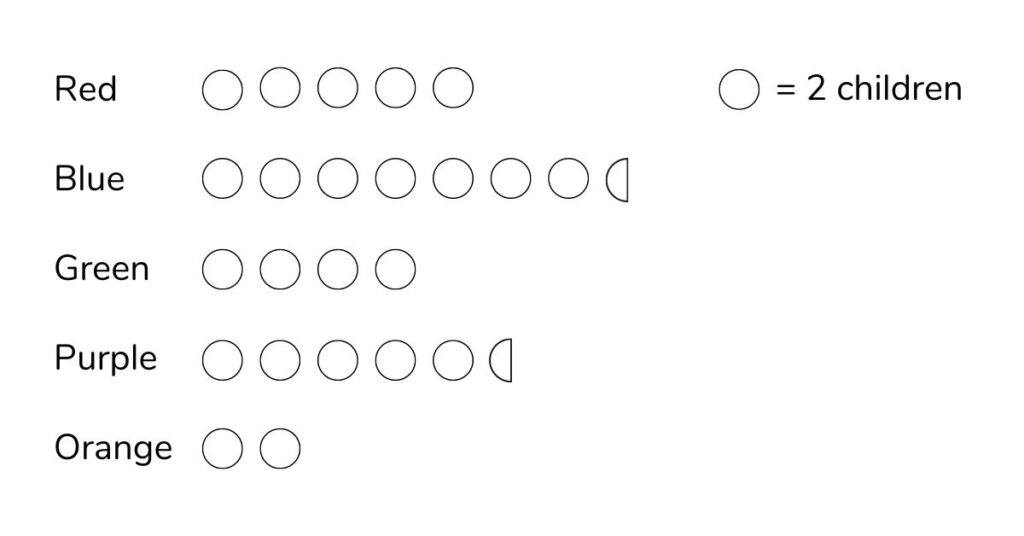
a) How many children chose red as their favourite colour?
b) How many more children chose blue than green?
c) How many children did she survey altogether?
Answers:
a) 10 children
b) children
c) 48 children
2. Ben measured the temperature between 7am and 2pm one day in February. He represented his results as a line graph.
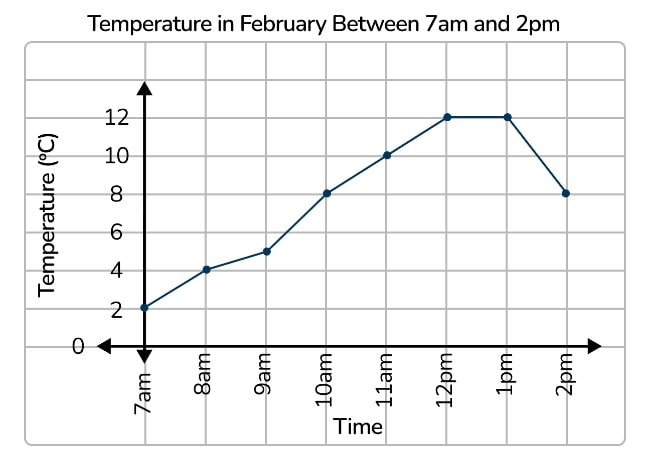
a) What temperature was it at 10am?
b) What was the coldest temperature he recorded?
c) What time did the temperature start to drop again?
Answers:
a) 8℃
b) 2℃
c) 1pm
White Rose Maths Year 4 statistics resources (FREE)
- Maths Worksheets Interpreting Charts Year 4
- Maths Worksheets Comparing, Sum and Difference In Charts Year 4
- Maths Worksheets Introducing Line Graphs Year 4
- Maths Worksheets Drawing Line Graphs Year 4
White Rose Maths Year 4 statistics resources (PREMIUM)
- Ready-to-go Lessons Statistics Year 4
- Diagnostic Assessments Statistics Year 4
- Maths Code Crackers Statistics Year 4
- Worked Examples Statistics Year 4
- Knowledge Organiser Statistics Year 4
Position and Direction Year 4
Pupils read, write and use pairs of coordinates in the first quadrant. The also learn to describe movements between positions as translation up, down, left and right.
Example Year 4 position and direction questions

1. a) On the grid above, plot the coordinates (1,2) (1,4) and (4,2)
b) If the shape is a rectangle. What would the 4th coordinate be?
Answers:
a) Points plotted accurately on grid
b) The 4th coordinate would be (4,4)
2. Look at the grid below,
a) Record the current coordinates.
b) Translate ‘A’ 3 right and 2 up. Record the new coordinates.
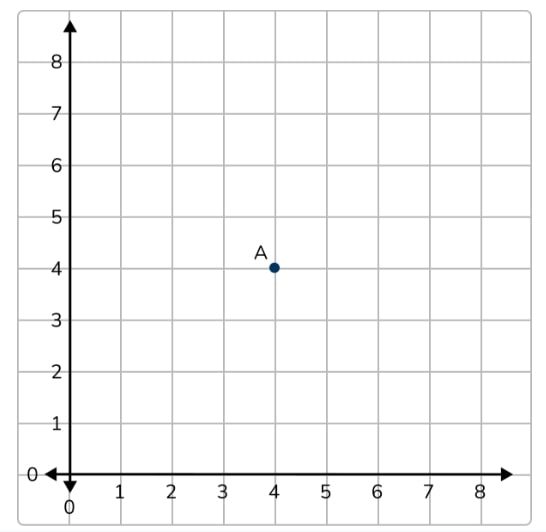
Answer: a) (4,4) b) (7,6)
White Rose Maths Year 4 position and direction resources (FREE)
- Maths Worksheets Describing Position Year 4
- Maths Worksheets Plot Coordinates Year 4
- Maths Worksheets Drawing 2-D shapes on a Grid Year 4
White Rose Maths Year 4 position and direction resources (PREMIUM)
- Ready-to-go Lessons Position and Direction Year 4
- Diagnostic Assessments Position and Direction Year 4
- Maths Code Crackers Position and Direction Year 4
- Worked Examples Position and Direction Year 4
Follow the links below for the other articles in this series:
DO YOU HAVE STUDENTS WHO NEED MORE SUPPORT IN MATHS?
Skye – our AI maths tutor built by teachers – gives students personalised one-to-one lessons that address learning gaps and build confidence.
Since 2013 we’ve taught over 2 million hours of maths lessons to more than 170,000 students to help them become fluent, able mathematicians.
Explore our AI maths tutoring or find out about primary maths tutoring for your school.



